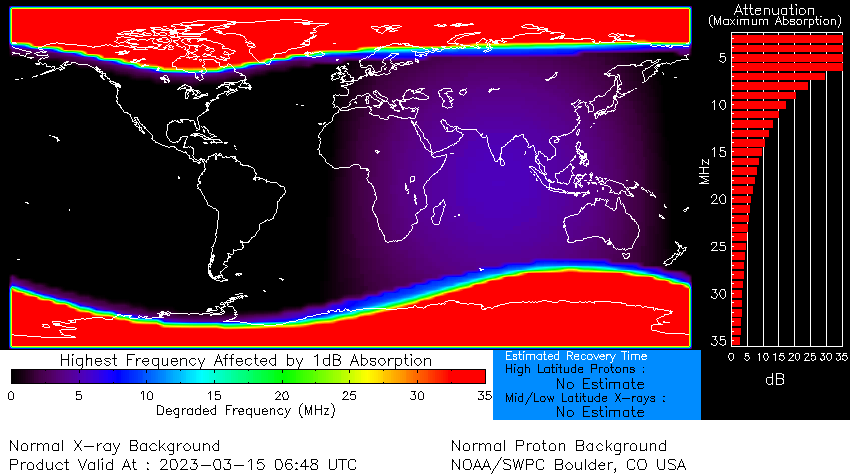Sun spews 'dark plasma' into space from its far side
The resulting storm disrupted radio signals near the Earth's poles.

An explosion on the the sun spewed 'dark plasma' into space that resulted in a moderate G2-class geomagnetic storm on Wednesday (March 15).
The eruption was detected on March 11 by coronagraphs at NASA's Solar Dynamics Observatory (SDO) and on the Solar and Heliospheric Observatory satellite (SOHO), an Earth-orbiting spacecraft co-operated by NASA and the European Space Agency. SOHO spotted a somewhat dark stream of plasma, known as a coronal mass ejection (CME), that emerged from the southwestern limb of the sun, according to Spaceweather.com.
Spaceweather reports that this "dark plasma" is not dark in the sense that dark matter or dark energy are; rather, this plasma is cooler and less luminous than the background sun and denser than gas surrounding it in the sun's atmosphere.
Related: Space weather: What is it and how is it predicted?
The timelapse of data from the SOHO coronagraph shows snowy dots and streaks that represent the energetic particles accelerated by shock waves in the CME. They create short-lived luminous speckles when they hit SOHO's sensors. The coronagraph view also captures the planet Mercury, which is the bright object in the lower right section of the image.
This dark plasma eruption, like other CMEs, was predicted to create mild geomagnetic effects when the energetic particles it spewed reached Earth. "NOAA analysts have modeled the CME and determined that it could graze Earth's magnetic field on March 15th, producing a G1-class geomagnetic storm," according to Spaceweather.com.
The effects of this CME were indeed seen on Earth today in the form of auroras and a moderate and a short-lived G2-class geomagnetic storm, Spaceweather reports. These particles were funneled by Earth's magnetic field toward our planet's poles in what is known as a polar cap absorption (PCA) event.
Breaking space news, the latest updates on rocket launches, skywatching events and more!
Solar physicist Keith Strong reported in a March 15 tweet that the storm disrupted radio signals near the Earth's poles and could interfere with airline travel close to these regions.
While most of these storms do not cause significant effects on Earth, particularly strong solar storms can wreak havoc on terrestrial technologies. One such storm, the Carrington Event of 1859, caused widespread telegraph disruptions worldwide and created auroras much farther from the poles than usual.
Follow Samantha Mathewson @Sam_Ashley13. Follow us @Spacedotcom, or on Facebook and Instagram.

Samantha Mathewson joined Space.com as an intern in the summer of 2016. She received a B.A. in Journalism and Environmental Science at the University of New Haven, in Connecticut. Previously, her work has been published in Nature World News. When not writing or reading about science, Samantha enjoys traveling to new places and taking photos! You can follow her on Twitter @Sam_Ashley13.


